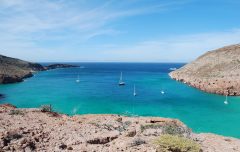Costa Rica: How to avoid the crowds

Our product team gives advice on where to avoid the crowds in Costa Rica, while still seeing the country's highlights.
The very thought of moss-filled trees sparkling with dew in a cloud forest or buttress roots taller than my local bus shelter in primary rainforest fills me with wonderment; and judging from the popularity of Costa Rica these days I’m not alone. With direct flights from London to San José, Costa Rica is very accessible but the country's growing popularity means that finding space in hotels in some of the country’s key destinations can be challenging. Here's how you can experience some of the country’s spectacular highlights and avoid the crowds at the same time.
San Gerardo de Dota
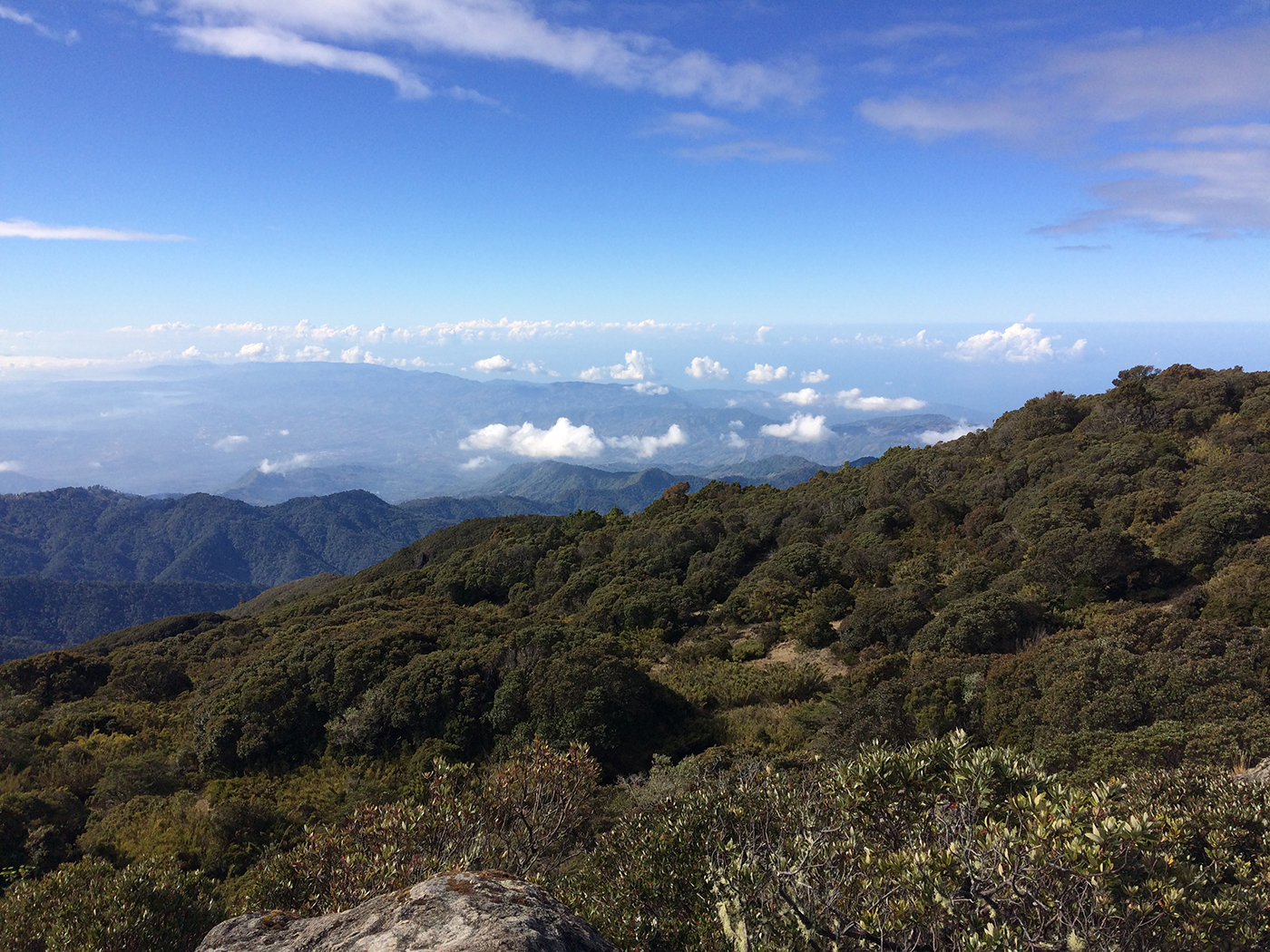
First stop: cloud forest and the sublimely pretty San Gerardo de Dota. When you first see a small crowd of people by the roadside and a handful of poorly parked four-wheel drives it may remind you of a Chelsea school drop-off but the likelihood is that there will be a birding guide in the front seat with a telescope trained on a Resplendent quetzal or an Emerald toucanet. You will inevitably at first wonder what all the fuss is about, but then you’ll take a peek and you’ll be hooked – before you know it you’ll be buying your own binoculars and starting to tick birds off the list. There’s no stigma or age-limit attached to birding here – it’s as popular as white-water rafting, trekking, surfing, football and beer!
Shadowy, mist-shrouded volcanic views from the Cerro de la Muerte, Costa Rica’s highest point, are spectacular; the name of Death Mountain comes from a time when there was no road and people from the hot lowlands would carry produce across the mountains to trade without any idea of how cold it would get in the mountains at night and sadly many would not make it.
Costa Ballena
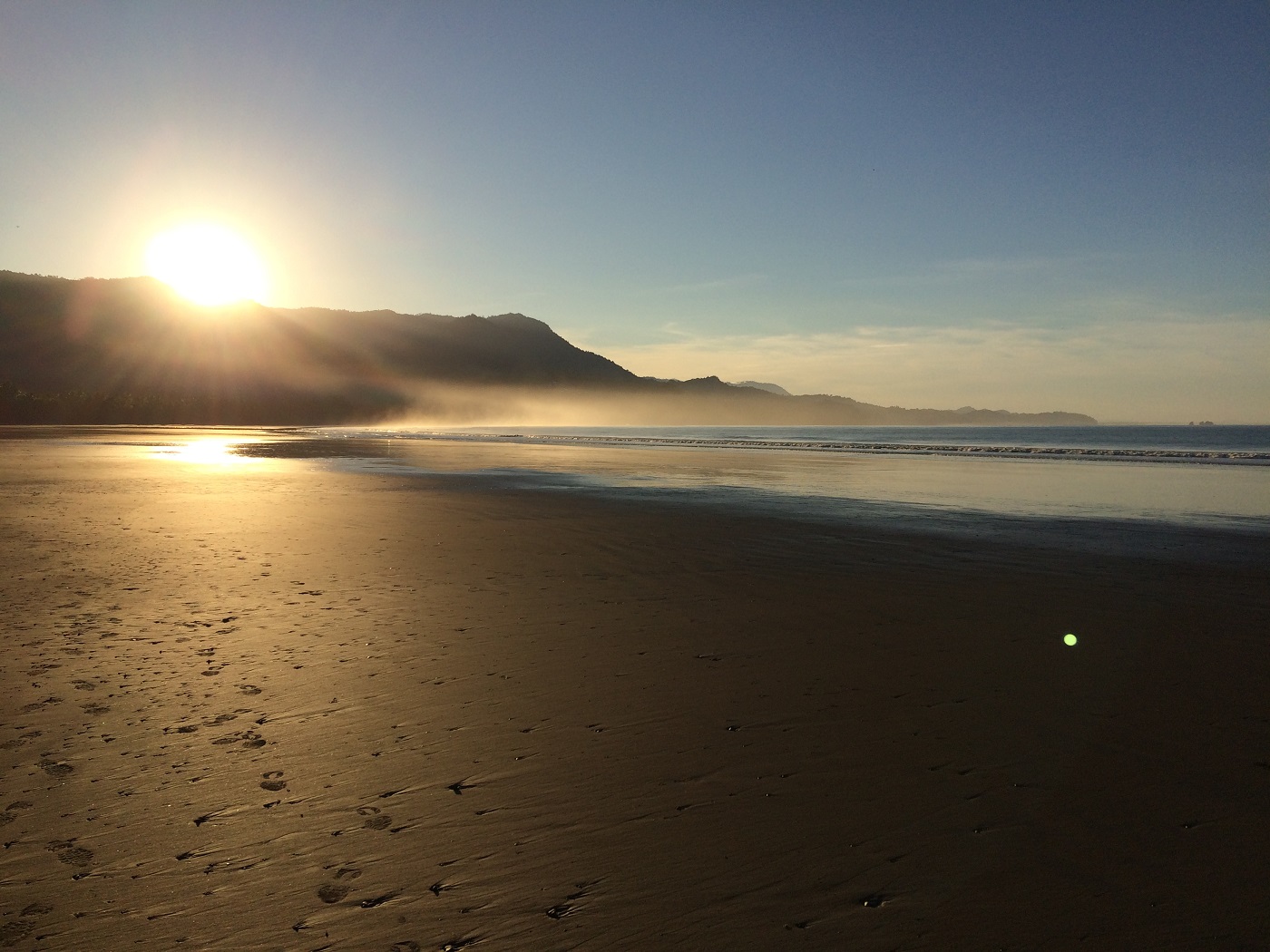
The temperature rises and the plants’ leaves grow broader as the south Pacific coast beckons. This area is commonly known as Costa Ballena (Whale Coast) as from mid-July to October and from December through to February you will almost be guaranteed a humpback whale sighting. By strange coincidence there is a protected national park in the laid-back surf town of Uvita with a wonderful spit of sand which is shaped just like a whale’s tail and is best seen from one of the hotels high up on the hills behind the beach.
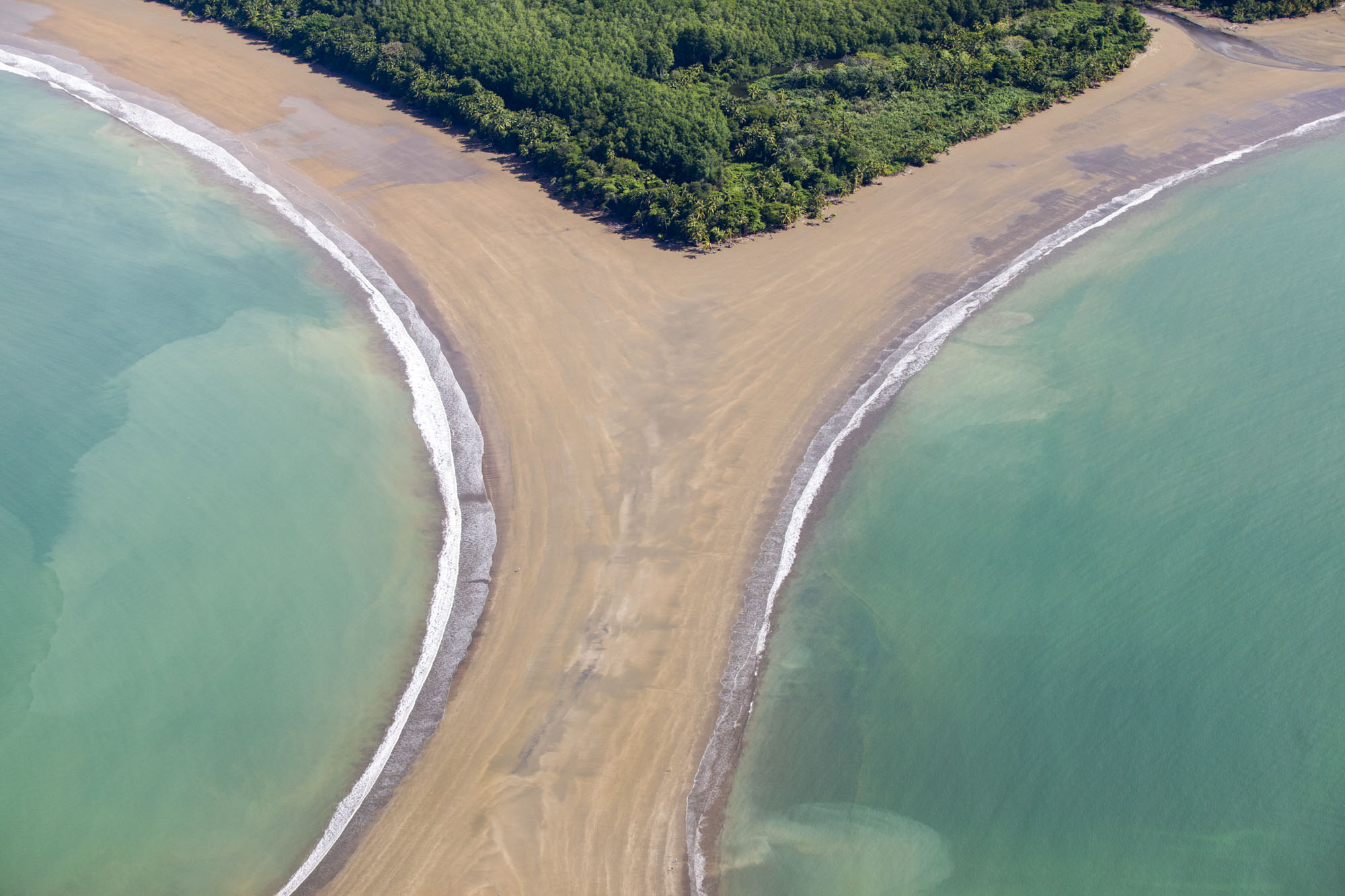
In remote Ocotal in the far south of the country, there is a wonderful new eco-lodge called Yaba Chigui. French and Canadian expats have settled here and opened businesses which are all barefoot but have a level of quality and service that wouldn’t be out of place in the heart of Quebec.
Skirting Manuel Antonio
From the southern coast, head north on the coast road skirting the littoral or heading inland on the slopes of the continental divide. One of the inland sections just north of the buzzing beach town and national park of Manuel Antonio takes you through African palm plantations along wonderfully narrow, winding roads lined with rainbow eucalyptus trees. I arrived at a cool, hillside lodge known as Santa Juana, a relaxed hotel whose staff have good sense of humour, joking that the local school they fund has just doubled in numbers – they had three pupils and now they have six!
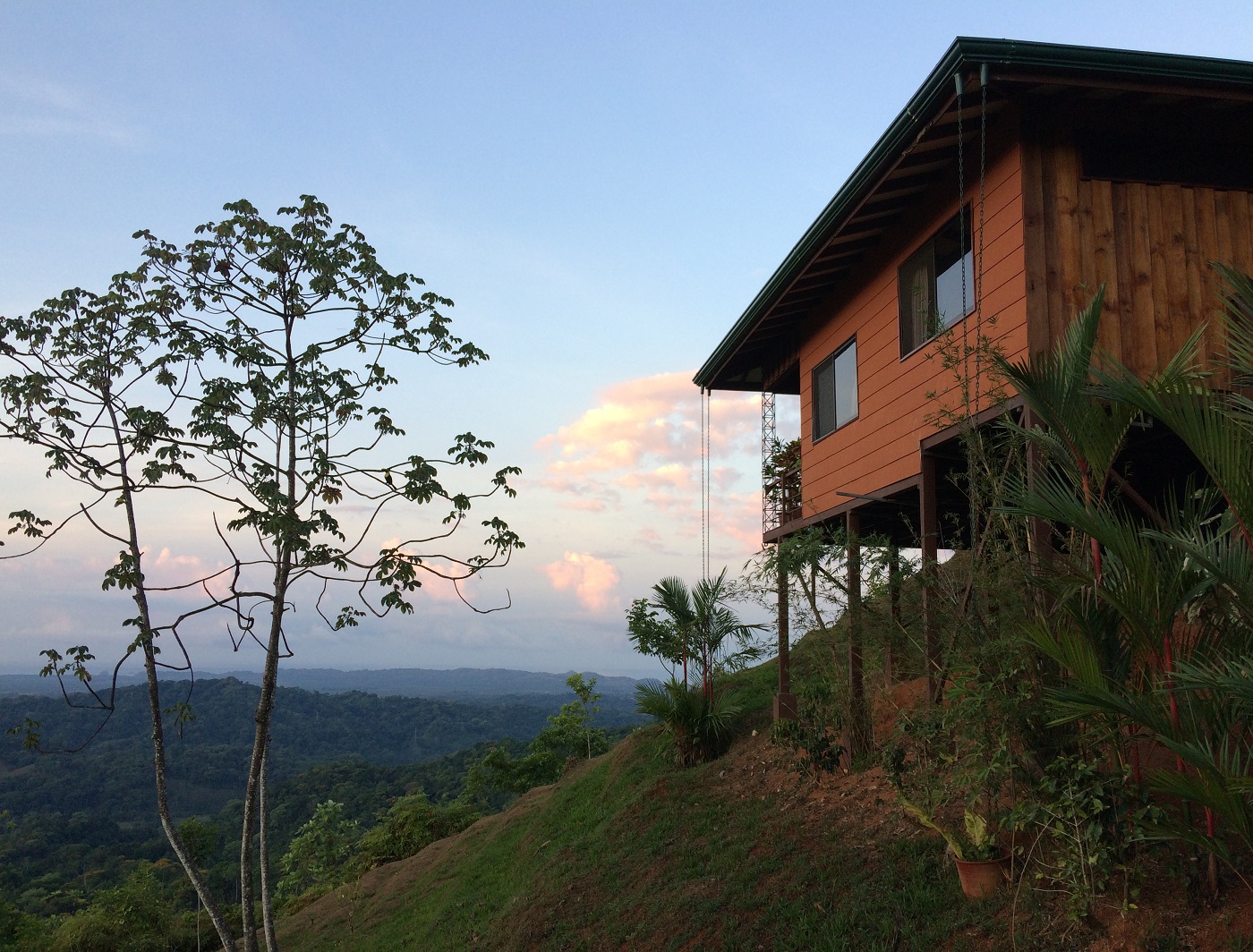
A lone cecropia tree whose branches blew rhythmically in the early morning breeze reminded me of Kate Bush’s Wuthering Heights music video and emanating from it was a cross between a screech and a tock-tocking; I adjusted my eyes and saw a keel-billed toucan about three metres from my room!
Rio Celeste
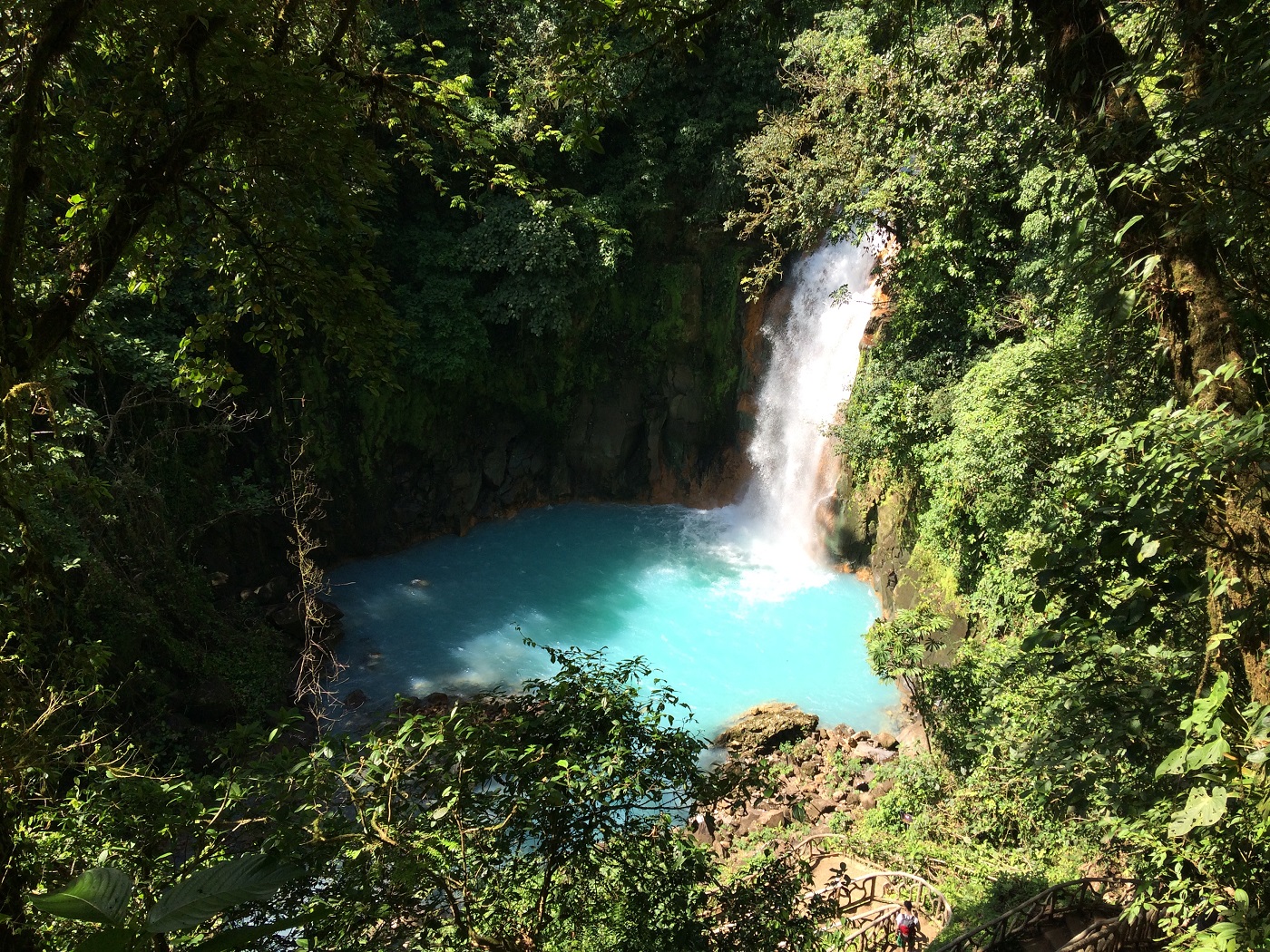
It’s very uncommon for a first-time visitor to Costa Rica not to visit Arenal volcano and stay in the vicinity of the volcano or local town of La Fortuna: for very good reason, the hanging bridges, bike trails, hot springs and plethora of lodges are all part of the allure. I could have happily stayed in Arenal but I was equally pleased that I’d headed north by little more than an hour-and-a-half to Rio Celeste in Tenorio National Park.
I’d seen pictures of the impossibly blue waters of Rio Celeste and at first I believed them to have been photo-shopped so when I set eyes on them during a trek through the national park I was shocked – even in real life it was hard to believe that this shade of blue existed! The walk was just less than 8km long and shaded most of the way by tangles of moss-covered trees and prehistoric ferns that looked like bunches of dried-up seahorses, which unfurled into wide, delicate leaves. I was also told to keep an ear out for the umbrella bird – my driver, guide and friend Mauricio did an impression of one for me. He loved to joke around so when I was only a few metres into the trail and I heard a noise which was exactly the same pitch and sound that I’d heard come from Mauricio five minutes earlier I was sure I’d turn around and see him darting behind a tree as he chuckled to himself! I’d love to end this story by saying “But there it was in front of me – a beautiful umbrella bird” but, alas, I heard it for the best part of four hours but it remained out of sight.
Find out more about these lesser-visited areas of Costa Rica by contacting our Travel Experts.
Tailor-made holidays
Flexible, custom-made holidays to Latin America created to match your exact requirements: our tailor-made itineraries are as unique as the clients for whom they are designed.
Design my tripPapagaio
Your edit for Latin American inspiration
Our exciting range of articles on Latin America explore everything from iconic destinations and lesser-known cultural gems to delicious traditional recipes. You’ll also find exclusive travel tips, first-hand client reviews and the chance to get your personal questions answered by our travel experts.
View Extraordinary Inspiration
